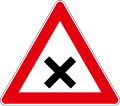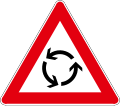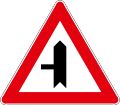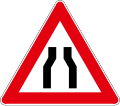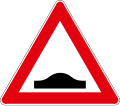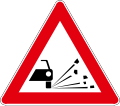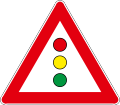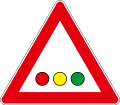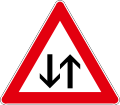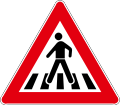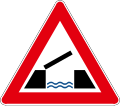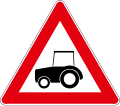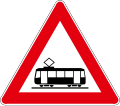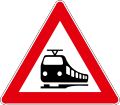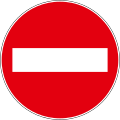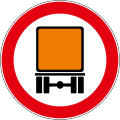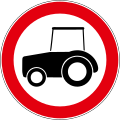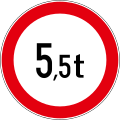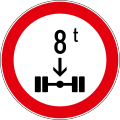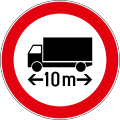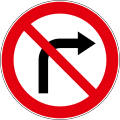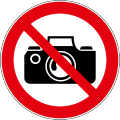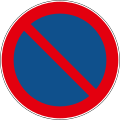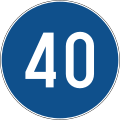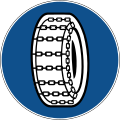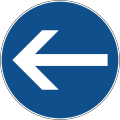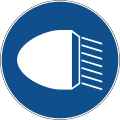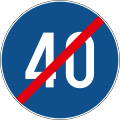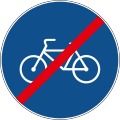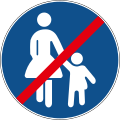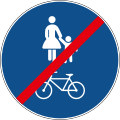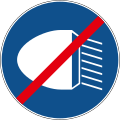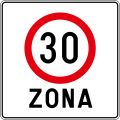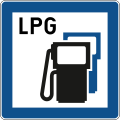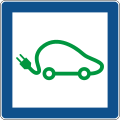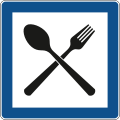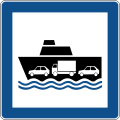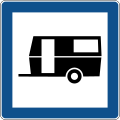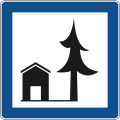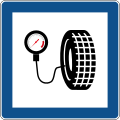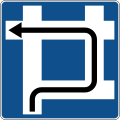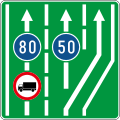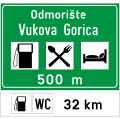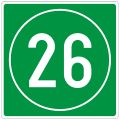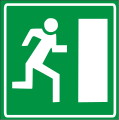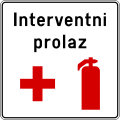
Road signs in Norway are regulated by the Norwegian Public Roads Administration, Statens vegvesen in conformity with the 1968 Vienna Convention on Road Signs and Signals, to which Norway is a signatory.

Road signs in Iceland are visual communication devices placed along roads and highways throughout the country to provide information, warnings, and guidance to motorists and pedestrians. Iceland never ratified the Vienna Convention on Road Signs and Signals, but road signs in Iceland conform to the general pattern of those used in most other European countries, with certain design elements borrowed from Danish and Swedish practice. Signs tend to be more sparsely employed than in other European countries, especially in rural areas.

The road signs of the Kingdom of the Netherlands, as well as Suriname, are regulated in the Reglement verkeersregels en verkeerstekens 1990, commonly abbreviated as RVV 1990. While most previous signage, from the RVV 1966 (Dutch) remained legal and official, they have been updated / replaced. Some aren't official anymore and have lost legal validity, but most surviving old signs remained valid.

Road signs in South Korea are regulated by the Korean Road Traffic Authority.

Road signs in the Czech Republic are regulated by the Ministry of Transport and the police. The signs are nearly the same as the European norm, but with small changes. The law governing the road signs is Decree number 30/2001 Sb., many times amended, and replaced by decree 294/2015 Sb., in force since 1 January 2016.

Road signs in Austria are regulated in Straßenverkehrsordnung (StVO).

Road signs in Switzerland and Liechtenstein generally conform to the 1968 Vienna Convention on Road Signs and Signals.
Road signs in Ukraine are governed by a combination of standards set out by the Vienna Convention on Road Signs and Signals, the European Union (EU), and Ukraine Transport and Roads Agency. Ukrainian signs are similar to the signs of other post-Soviet states and are set out in 7 separate categories based on meaning: warning, priority, prohibitory, mandatory, information, service, and additional plates.

Bosnia and Herzegovina is a signatory to the Vienna Convention on Road Signs and Signals. Therefore, road signs do not differ much from the rest of Europe, such as Croatia, Slovenia, Serbia and North Macedonia. Ministry of Transportation of Bosnia and Herzegovina regulates them. Bosnia and Herzegovina drives on the right as with the rest of Europe, except for Cyprus, Ireland, Malta and the United Kingdom. Bosnian and Herzegovinan road signs have two scripts, Latin and Cyrillic script.

Road signs in Cambodia are standardized road signs are similar to those used in Europe but much of it resembles road signage systems used in South American countries with certain differences. The designs of road signage match their neighbours of Thailand and Malaysia, both of which adopt a modified version of the South American road signage system. Until the early 1980s, Cambodia closely followed American, European, Australian, and Japanese practices in road sign design, with diamond-shaped warning signs and circular restrictive signs to regulate traffic. Unlike Thailand and Malaysia, Cambodia does not use the FHWA Series fonts typeface, favouring Helvetica instead.

This is a list of road signs in Denmark.
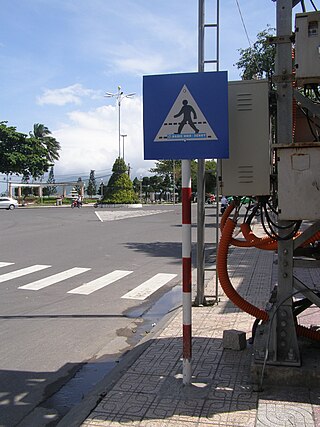
Road signs in Vietnam follow Chinese and French road signs. Some signs are written in both Vietnamese and English. The signs are prescribed by the Ministry of Transportation of Vietnam.

Road signs in Mongolia are similar to the Soviet, British, and other European road sign systems. Road signs are regulated in the MNS 4597:2014 standard and conform to the general pattern of road signs as set out in the Vienna Convention on Road Signs and Signals. Despite the fact that Mongolia was never part of the Soviet Union, the MNS 4597:2014 standard for road signs has many similarities with its post-Soviet counterparts based on the Soviet standard ГОСТ 10807-78 and the Russian standard ГОСТ Р 52290-2004. Mongolia acceded to the Vienna Convention on Road Signs and Signals on December 19, 1997.

Road signs in Georgia are similar to the road sign system of other post-Soviet states that ensure that transport vehicles move safely and orderly, as well as to inform the participants of traffic built-in graphic icons. However, some road signs look a bit different from Soviet ones and closer to the European ones. These icons are governed by the Vienna Convention on Road Traffic and Vienna Convention on Road Signs and Signals.

Road signs in Kyrgyzstan are similar to the road sign system of other post-Soviet states that ensure that transport vehicles move safely and orderly, as well as to inform the participants of traffic built-in graphic icons. These icons are governed by the Vienna Convention on Road Traffic and Vienna Convention on Road Signs and Signals.

Road signs in Lithuania conform to the general pattern of those used in most other European countries as set out in the 1968 Vienna Convention on Road Signs and Signals. Due to the country being occupied and annexed by the Soviet Union between 1940 and 1990, when it restored its independence, modern road signs used in Lithuania are in many ways similar in design to road signs used in the Soviet Union before its dissolution in 1991. This design of road signs is still used in most post-Soviet states, in particular Russia, Belarus, and Ukraine. Neighboring post-Soviet Baltic countries Latvia and Estonia, which were also occupied by the Soviet Union in 1940, have significantly modified their road sign designs, resulting road signs in these two countries being extremely different in design from road signs used in most other post-Soviet states.

The road signs, used on the Serbian road network, are regulated by the "Regulation of Traffic Signs", which was last time modified in 2017.

Road signs in the Republic of Bulgaria were introduced by the Road Traffic Act and are regulated by:
Road signs in Latvia conform to the general pattern of those used in most other European countries. They are regulated in Ceļu satiksmes noteikumi and the standards documents LVS 77–1:2016 "Ceļa zīmes. 1. daļa: Ceļa zīmes", LVS 77-2:2016 "Ceļa zīmes. 2. daļa: Uzstādīšanas noteikumi" and LVS 77-3:2016 "Ceļa zīmes. 3. daļa: Tehniskās prasības" in conformity with the 1968 Vienna Convention on Road Signs and Signals. Latvia acceded to the Vienna Convention on Road Signs and Signals on October 19, 1992.
Road signs in Montenegro are regulated in Pravilnik o saobraćajnoj signalizaciji.


